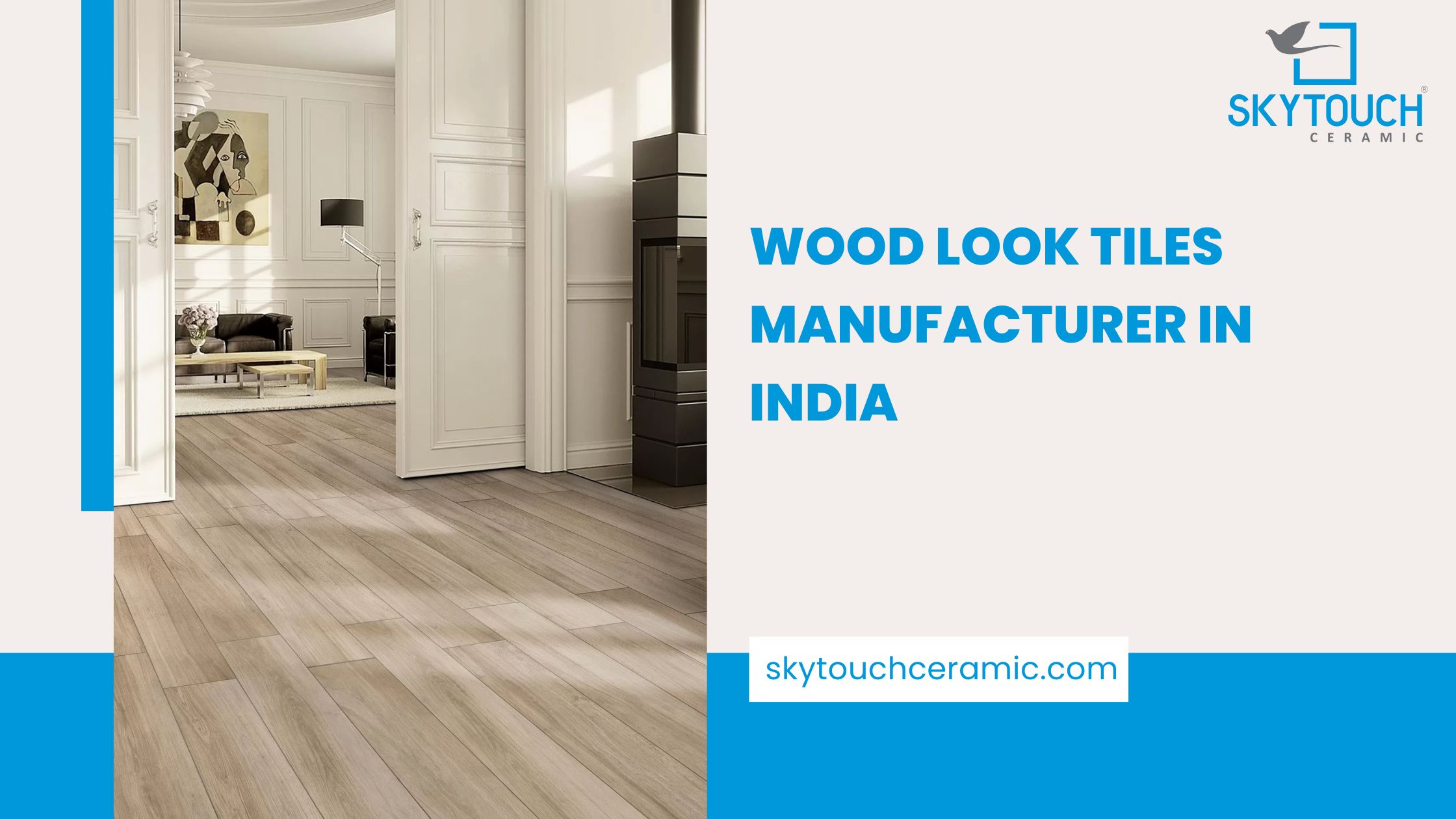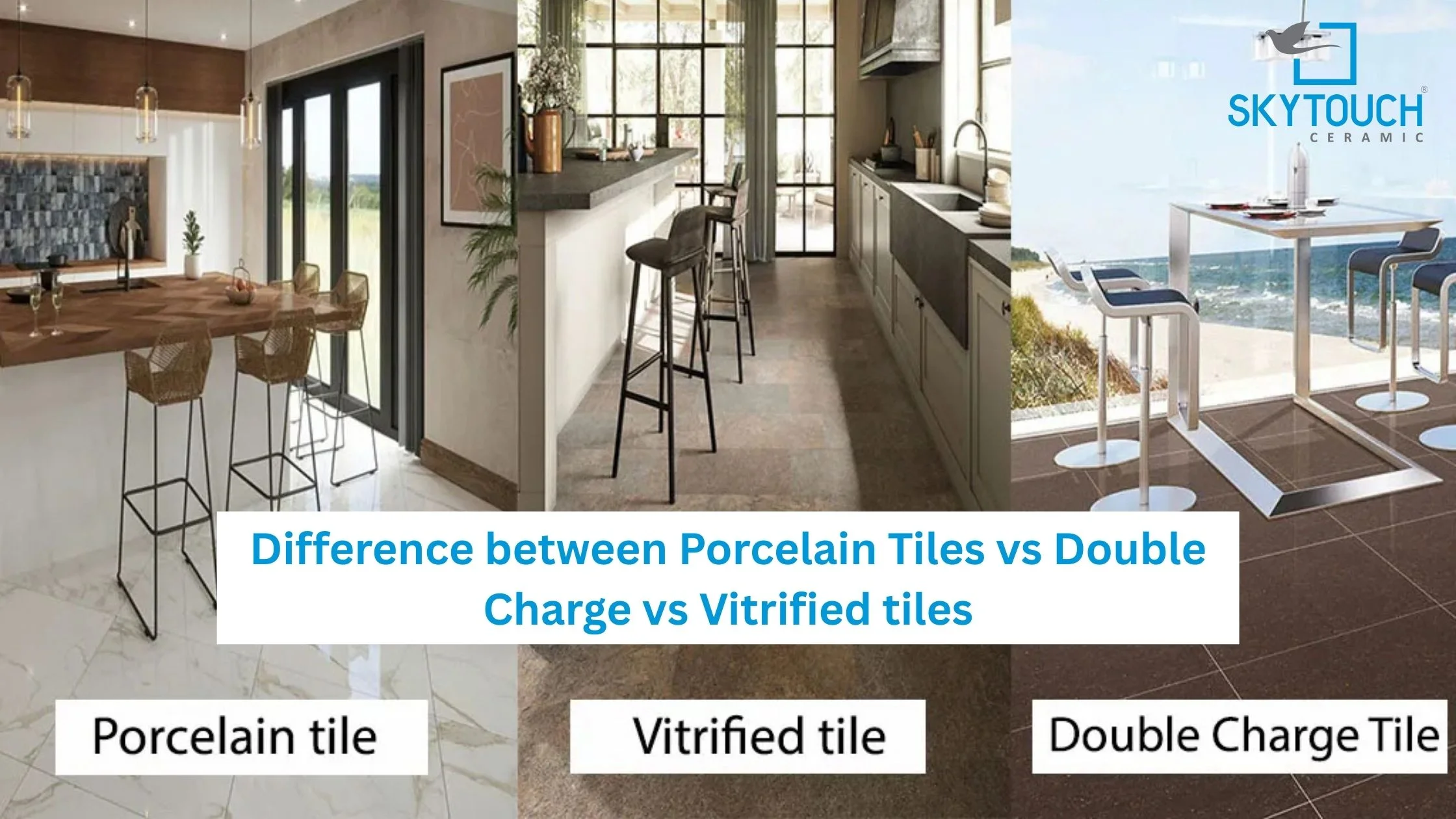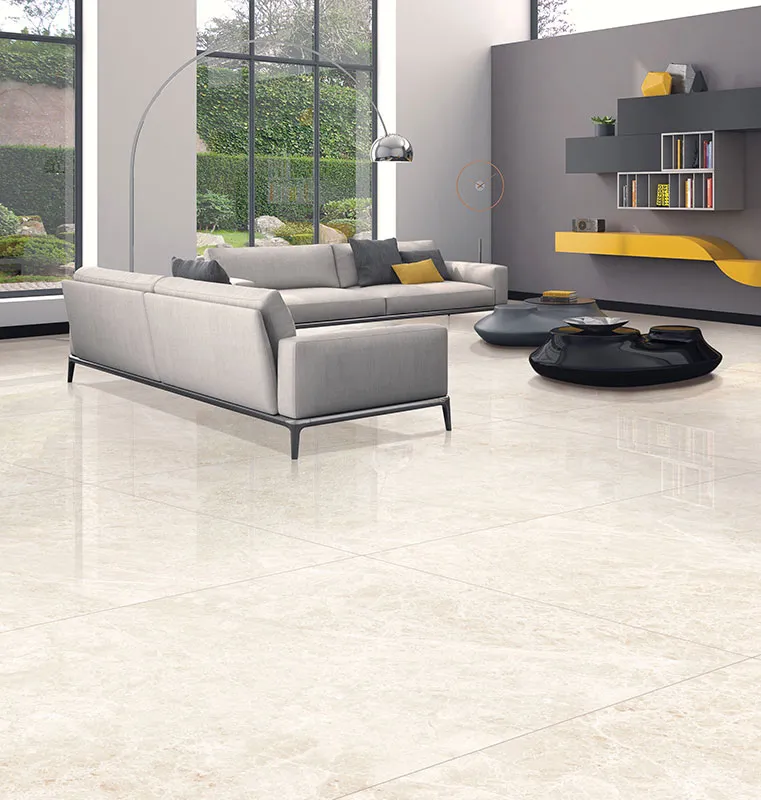When selecting tiles, understand the technical specifications for tiles, as this ensures the tiles will be strong enough, safe and right for the project. You should also look at the rating for Porcelain Enamel Institute (PEI) and the Dynamic Coefficient of Friction (DCOF). We will discuss what these ratings are, the processes used to assign them and why they are needed for your tiling.
Introduction to Tile Ratings
Besides being attractive, tiles need to be suitable for each specific application based on their performance. PEI stands for damage-resistance on tile surfaces and DCOF stands for the coefficient that shows how slip-resistant a tile is. These ratings assist in selecting the correct materials for both home and business situations.
Understanding PEI Ratings
According to the Porcelain Enamel Institute, the PEI rating measures how durable and resistant to wear ceramic and porcelain tiles can be. The measure of abrasion and surface wear tells you if tiles are suitable for different purposes.
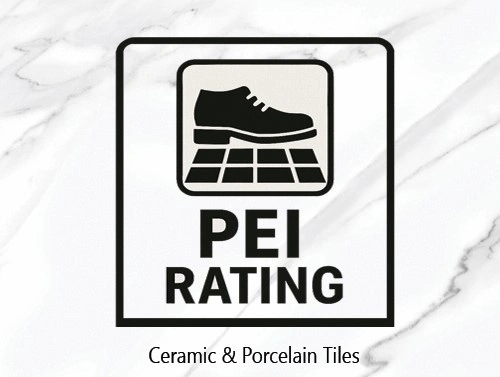
How is the PEI Rating Determined?
A rotary abrasion resistance machine is used to test the tiles. Abrasive substances on the machine rotate on the glazed tile a fixed number of times. How many times a tile can be rotated without showing obvious wear determines its PEI score.
PEI Rating Scale
The PEI rating scale ranges from 0 to 5:
PEI 0: It is designed for walls alone and should not be placed on floors.
PEI 1: Suitable for places that have hardly any foot traffic, like bathrooms.
PEI 2: This can be used in places like residential bathrooms and bedrooms.
PEI 3: is suitable for typical kitchen and hallway use with average or moderate traffic.
PEI 4: This material is suited for regions with significant residential and commercial traffic.
PEI 5: This standard is used in places that receive a lot of foot traffic, including shopping centers and airports.
Importance of PEI Ratings in Projects
A floor tile should have the proper PEI rating to remain in good shape and retain its appearance over time. Choosing tiles with a lower PEI rating in busy areas increases the chances of wearing them out quickly.
Understanding DCOF Ratings
DCOF stands for Wet Dynamic Coefficient of Friction and measures how much friction the tile gives off when wet. It is necessary for safety, mainly in places where moisture can be a problem.
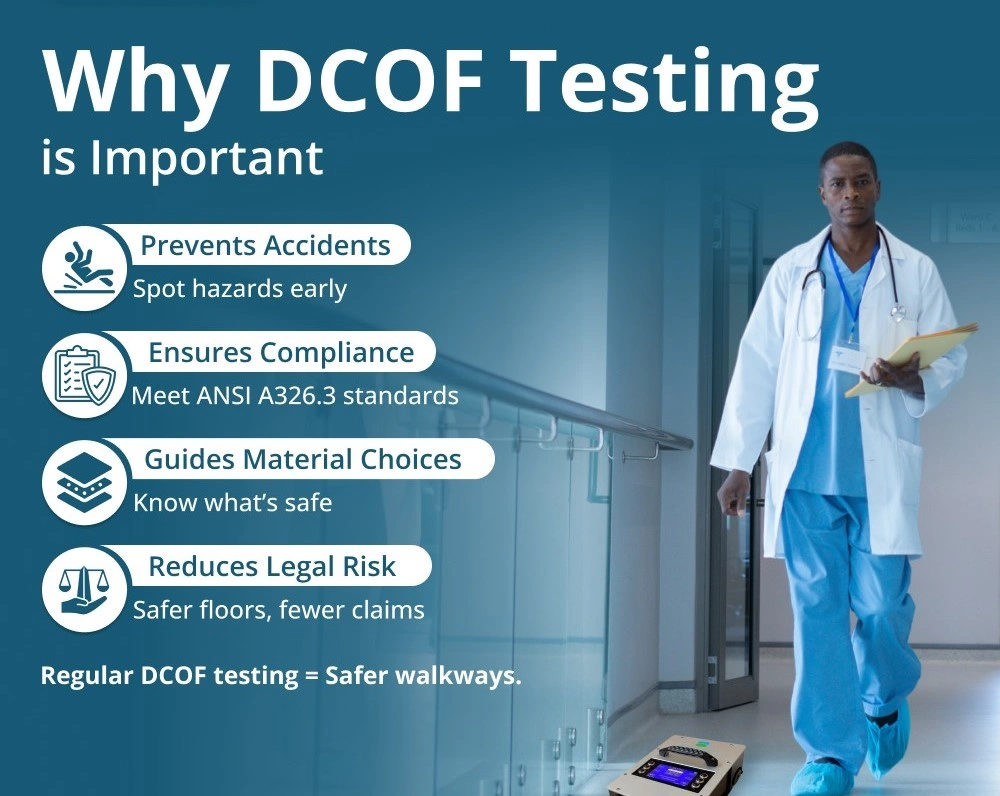
How is the DCOF Rating Determined?
The DCOF is calculated using the approach laid out in the ANSI A326.3 standard test method. A slipping test is done by using a special device to measure the strength necessary to keep an object from sliding on the tile when wet. The number you get reflects how securely the tile can grip various surfaces.
DCOF Rating Standards
DCOF ≥ 0.42: As required by the Tile Council of North America and the ADA, this is suitable for any level interior area where walking on wet surfaces is likely.
DCOF 0.30–0.42: Works well, but you need to be careful since it has a higher risk of slipping and should be avoided where wet areas might occur.
DCOF < 0.30: the material should not be used on floors due to its low slip resistance.
Key Points:
• Slippery and busy areas can be made safer by using tiles with a high DCOF.
• Smooth and glass-like tiles and glazes perform better in terms of DCOF in comparison to textured and matte surfaces.
• Areas where slips are more likely, including commercial kitchens and pool decks, may need to have a high DCOF.
Importance of DCOF Ratings in Projects
Focusing on the right DCOF standards for tiles is essential to avoid accidents involving slips and falls. Safety is even more important in a commercial setting because regulations are very strict.
PEI vs. DCOF: What’s the Difference?
| Aspect | PEI Rating | DCOF Rating |
|---|---|---|
| Measures | Abrasion resistance (wear) | Slip resistance (friction) |
| Application | Durability for foot traffic | Safety for wet/slippery areas |
| Scale | 0 (lowest) to 5 (highest) | 0 (slippery) to 1 (grippy) |
| Typical Use | Choosing tile for floors/walls | Choosing tile for wet areas |
Both ratings are crucial, but they measure different properties. For example, a tile may have a high PEI (very durable) but a low DCOF (slippery when wet), making it unsuitable for a bathroom floor.
Integrating PEI and DCOF Ratings in Tile Selection
When selecting tiles for a project, both PEI and DCOF ratings should be considered in tandem:
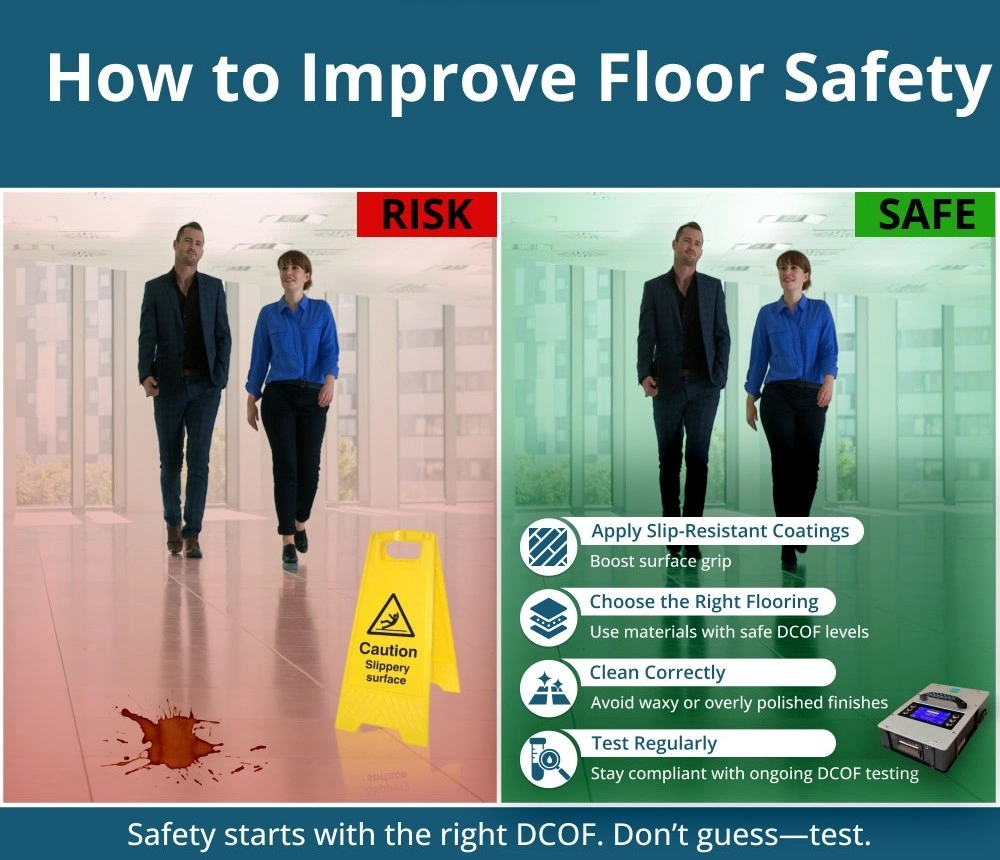
Residential Projects
Living Rooms, Bedrooms:These types of rooms have enough traction for PEI 2–3, since the foot traffic isn’t very heavy and you aren’t likely to slip.
Kitchens, Bathrooms, Entryways: Use tiles with PEI 3–4 for toughness and DCOF ≥ 0.42 to avoid slipping.
Walls, Backsplashes: PEI 0–2 is enough because they do not regularly get traffic.
Commercial Projects
Retail stores, offices and restaurants: Materials need a PEI rating of 4–5 for lasting use and a DCOF ≥ 0.42 for enhanced safety.
Airports, Hospitals and Schools: Choose PEI 5 for the maximum slip resistant tiles and choose tiles with a DCOF equal to or above 0.42 to prevent slips.
Outdoor & Wet Areas
Pools, Patios and Walkways: Ensure DCOF is greater or equal to 0.42 and you can use texture to get even more traction.
Checking both ratings will guarantee that the chosen tiles will suit the required conditions for your project.
Additional Considerations
Consult with the manufacturer to learn the right way to install a certain tile material. There could be tiles in the list that come with characteristics important for your specific project.
COF (Coefficient of Friction): This standard is mostly not used now, as DCOF is preferred for tile products.
R Ratings: In Europe, ratings of R9 through R13 show how resistant the surface is to slipping under various conditions.
Shade Variation, Water Absorption: These aspects should be considered when working with products in wet or outdoor places.
Maintenance & Cleaning
Tiles with higher DCOF and textured surfaces may require more frequent cleaning to prevent buildup that can reduce slip resistance over time.
Common Mistakes to Avoid
Skipping PEI in Busy Regions: Using a low-PEI tile in a high-traffic public place or busy hallway can cause the tile to wear out and require expensive repairs.
Overlooking DCOF in Wet Areas: A slippery tile on the floor in a bathroom or kitchen can cause accidents.
Assuming All Tiles Are Equal: A few types of tiles aren’t rated. Natural stone and several unglazed kinds of tiles don’t have PEI or DCOF ratings and need to be examined differently.
Conclusion
Understanding PEI and DCOF ratings is essential for selecting the right tiles for your projects. These ratings provide valuable insights into the durability and safety of tile products, ensuring that they meet the functional and aesthetic requirements of the intended space. By considering both ratings, along with other factors such as manufacturer guidelines and maintenance needs, you can make informed decisions that contribute to the success and longevity of your tiling projects.
At Skytouch Ceramic, we combine style with substance, offering tile collections that are tested, rated, and ready for real-world applications. Explore our range to find the perfect match for your next project—where beauty meets functionality.


